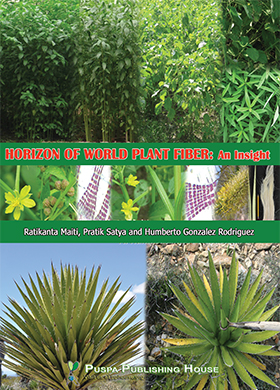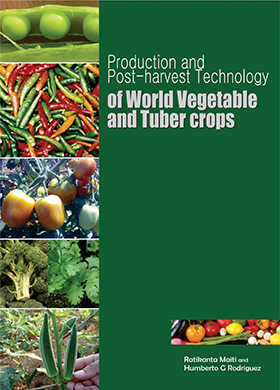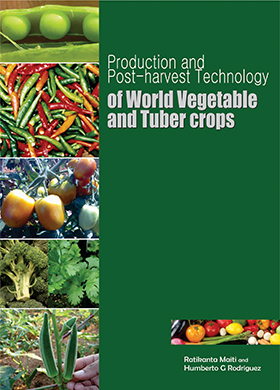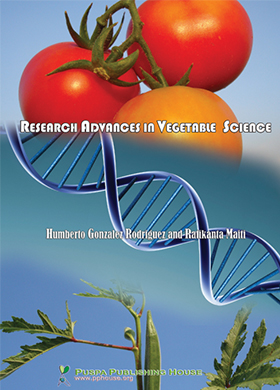Short Research
Genetic Divergence Analysis for Yield and Quality Traits in Garden Pea (Pisum sativum L.)
Priyanka Bijalwan, Akhilesh Raturi and A. C. Mishra
- Page No: 083 - 086
- Published online: 07 Feb 2018
- DOI : HTTPS://DOI.ORG/10.23910/IJBSM/2018.9.1.3C0837
-
Abstract
-
priyankabijalwan24@gmail.com
Genetic diversity among twenty-three pea genotypes was worked out using Mahalanobis D2 statistic. On the basis of genetic distance, these genotypes were grouped into 5 clusters. Cluster IV was largest, consisting of eight genotypes followed by cluster I with seven genotypes, cluster III with four genotypes, cluster II with three genotypes while cluster V contained single genotype. There was no parallelism between genetic diversity and geographical distribution. Cluster IV (PSM-3, Pea-901, CHP-2, AP-2, AP-5, VRP-6, PSM-4 and Pea 902) and cluster V (Pb-89) exhibited highest value of inter-cluster distance (377.64) followed by cluster III (PC-531, AP-1, VRP-7 and VL-7) and cluster V (284.18), cluster II (PSM-5, E-6 and Pant Uphar) and cluster V (214.09) and cluster I (PM-2, Pea-801, Arkel, Arka Ajeet, AP-3, JM-1 and AP-4) and cluster V (168.02). The maximum intra-cluster distance was noted for cluster IV (25.89). Cluster V exhibited maximum mean values for pod yield for plant, TSS, pod length, number of pods plant-1, fresh weight of root nodules plant-1, root length, number of flowers cluster-1 and days to 50% flowering. The character fresh weight of root nodules plant-1 contributed maximum towards divergence. Considering diversity pattern and other performance of the genotypes PSM-3, Pea-901, CHP-2, AP-2, AP-5, VRP-6, PSM-4 and Pea-902 from cluster II and genotype Pb-89 from cluster V may be taken into consideration as better parents for an efficient hybridization programme of pea.
Keywords : Pisum sativum L., D2 analysis, cluster mean and genetic divergence
-
Introduction
Pea (Pisum sativum L., 2n=2x=14) is one of the earliest food crop. It thrives well in places with cool climate and hence is grown in almost all the temperate regions of the world (Blixt, 1970). Pea has a wide range of agricultural and horticultural uses. The green seeds are used as fresh, frozen or canned vegetables and the mature dry seeds are used as pulse. The pea seeds are very rich in protein (27%) and green biomass is also high grade fodder due to 14 to 24% protein content in it. The protein of peas contains all the essential amino acids important for the normal activity of living organisms (Smirnova-Ikonnikova, 1960). Inclusion of peas in crop rotation is agronomically very significant due to high nitrogen fixation efficiency of root nodulating Rhibium bacteria (Rudnicki and Wenda, 2002). Moreover, peas have a higher capacity to utilize minerals in the form of inorganic compounds which are difficult to assimilate and therefore practically not available for cereals (Adgo and Schulze, 2002) and therefore, it can be grown without competition with cereal crops (Hasan Mitu et al., 2004).
In India, garden pea is cultivated from hills of Himalayas to sub-tropical plains. In the hills, off-season crops during late Kharif and Spring-summer are grown whereas in plains, Rabi crop is practiced. In Uttarakhand state, pea is grown on an area of 0.0117 mha with an annual production of 0.078 million mt (Anonymous, 2013). In recent years many improved varieties have been evolved for plains of India. For enhancing productivity in hilly areas, high yielding varieties needs to be developed.
Like other crops, assessment of different desirable traits spread over diverse genotypes is important to rapid advance in yield improvement. The importance of genetic diversity in the improvement of a crop has been studied in both self and cross pollinated crop (Griffring and Lindstrom, 1954; Murthy and Anand, 1966; Gaur et al., 1978). The plant breeders are always interested to know the genetic divergence among the varieties available due to reasons that crosses between genetically diverse parents are likely to produce high heterotic effect (Ramanujam et al., 1974) and crosses involving distantly related parents within the same species produce wide spectrum of variability. D2 statistic is a useful tool to measure genetic divergence among genotypes in any crop developed by Mahalanobis (1936). In view of the above, an attempt has been made to identify genetic divergent lines among the available gene pool of garden pea; so as to select the potential parents for further breeding programme to attain the anticipated improvement in pod yield.
-
Materials and Methods
The experiment was laid out in randomized block design with three replications at experimental field of Department of Vegetable Science, Uttarakhand University of Horticulture and Forestry, Ranichauri Campus, District Tehri Garhwal, Uttarakhand during rabi,2012–13 and late kharif 2013. The treatments comprised of 23 genotypes of vegetable pea (Pisum sativum L.). The crop of each genotypes was raised in a spacing of 30×10 cm2 row to row and plant to plant, respectively. Data were recorded on five randomly selected competitive plants of each genotype from each replication for fourteen characters viz., days to 50% flowering, node number of first flowering, shoots plant-1, number of flowers cluster-1, root length (cm), fresh weight of root nodules plant-1 (g), plant height at first harvesting (cm), number of pods plant-1, pod length (cm), number seeds pod-1 (g), 10 pod weight (g), shelling percentage (%), TSS (0Brix) and pod yield plant-1 (g). Genetic divergence was estimated by using D2 statistics of Mahalanobis (1936) and clustering of genotypes was done according to Tocher’s method as described by Rao (1952).The per cent contribution of characters towards genetic divergence was calculated according to Singh and Chaudhary (1977).
-
Results and Discussion
The analysis of variance revealed significant differences among the genotypes for all the characters studied indicating presence of considerable amount of genetic variability for all the characters. The computation from co-variance matrix gave non-hierarchical clustering based on Mahalanobis D2 values among 23 genotypes and grouped them into five clusters. The clustering pattern of 23 genotypes of pea indicated that the genotypes included in the investigation could be grouped five clusters. The cluster IV was largest with eight genotypes (PSM-3, Pea-901, CHP-2, AP-2, AP-5,VRP-6, PSM-4 and Pea-902) followed by cluster I with seven genotypes (PM-2, UHE Pea-801, Arkil, Arka Ajeet, AP-3, JM-1 and AP-4), cluster III with four genotypes (PC-531, AP-1, VRP-7 and Vl-7), cluster II with three genotypes (PSM-5, E-6 and Pant Uphar) while cluster V contained single genotype (P-89) (Table 1). Group constellation of pea genotypes through genetic divergence has also been reported by Kumar et al. (2006); Singh et al. (2007), Yadav et al. (2009), Gudadinni et al. (2017); Gupta et al. (2017).
The cluster V earned the highest cluster mean values for pod yield plant-1 (39.09 g), T.S.S. (16.07 °Brix), number of seeds per pod (7.65), pod length (9.40 cm), number of pods plant-1
(4.93), fresh weight of root nodules per plant (0.39 g), root length (12.9 cm), number of flowers cluster-1 (2.43) and shoots plant-1 (2.27). Cluster II showed earliness in relation to lowest values for days to 50% flowering (35.11 DAS) and node number of first flowering (8.79) and highest shelling percentage (54.72%). Cluster I had highest values for plant height at first harvesting (58.01 cm) and cluster IV had highest value for 10 pod weight (64.29 g) (Table 2). In this way, it was evident from this parameter that cluster V had highest values for maximum
number of pod yield contributing characters. Variable cluster means for different plant growth and fruit yield characters have also been reported by Sureja and Sharma (2001), Tiwari et al. (2004), Kumar et al. (2007), Kumari et al. (2013), Georgieva et al. (2016) and Gupta et al. (2017) in garden pea.
Inter cluster distance (√D2) values worked out as per Mahalanobis’s D2 statistic indicated that the genotypes included in clusters IV and V were genetically divergent in the view of highest inter cluster mean (377.64) followed by clusters III and V (284.18) and clusters II and V (214.09). Minimum inter-cluster distance was observed between cluster II and cluster III (28.78). Intra-cluster distance is a measure of genetic divergence existing among the genotypes included in the same cluster. Maximum intra-cluster distance was noted for cluster IV (25.89) followed by cluster I (24.80) (Table 3). A wide range of inter-cluster genetic distance among the different clusters of pea genotypes have also been reported by Tiwari et al.(2004), Kumar et al. (2007), Singh et al.(2007), Sharma et a. (2013), Georgieva et al. (2016) and Khan et al. (2017).
The contribution of different characters to total genetic distance is important to assess relative importance of the characters to be included in genetic diversity studies. The data on this parameter as depicted in Table 4 indicated that fresh weight of root nodules per plant contributed maximum towards genetic distance (56.13%) followed by 10 pod weight (13.04%), number of flowers cluster-1 (7.91%), root length (5.53%), TSS (3.16%), node number of first flowering (2.37%), plant height at first harvesting (2.37) and pod length (2.37%). The contribution of other characters to total genetic divergence was lower. Therefore, above traits should necessarily be included in genetic divergence studies in garden pea. The Variable contribution of different plant growth and fruit yield characters to genetic distance have also been reported by Sureja and Sharma (2001), Tiwari et al. (2004), Kumar et al. (2007); Kumari et al. (2013), Georgieva et al. (2016) and Gupta et al. (2017) in garden pea.
It has been proved from the earlier studies that genetically distant parents are able to exert high heterosis in the progenies (Falconer, 1960). Therefore, in the view of highest inter-cluster genetic distance (√D2) between cluster IV and cluster V (377.64) and maximum cluster means for most of desirable
traits for pod yield in these clusters, cross combinations viz., Pb-89×PSM-3, Pb-89×Pea-901, Pb-89×CHP-2, Pb-89×AP-2, Pb-89×AP-5, Pb-89×VRP-6, Pb-89×PSM-4 and Pb-89×Pea 902 are recommended for developing progeny with high vigour and desirable traits in garden pea.
-
Conclusion
The genotypes were grouped into 5 clusters. Cluster IV was largest followed by cluster I, cluster III, cluster II and cluster V. The maximum inter cluster distance was found between cluster IV and cluster V (377.64) and minimum value was found between cluster II and cluster III (28.78). The maximum intra-cluster distance was noted for cluster IV (25.89). The character fresh weight of root nodules per plant contributed maximum towards divergence. So, the cross combinations viz., Pb-89×PSM-3, Pb-89×Pea-901, Pb-89×CHP-2, Pb-89×AP-2, Pb-89×AP-5, Pb-89×VRP-6, Pb-89×PSM-4 and Pb-89×Pea 902 are recommended for developing progeny with high vigour and desirable traits in garden pea.
-
Acknowledgement
The author sincerely acknowledges the College of Forestry, V. C. S. G. Uttarakhand University of Horticulture and Forestry, Ranichauri (Uttarakhand) for her M.Sc. research. Thanks are also due to the Head and Professor for providing research material, field and laboratory facilities at the Department of Vegetable Science, during the course of this investigation.
Table 1: Clustering pattern of 23 pea genotypes by Tocher’s method
Table 2: Cluster means for 14 characters of 23 pea genotypes
Table 3: Average intra-inter cluster distance (√D2) for 23 pea genotypes
Table 4: Contribution of different plant growth and fruit yield characters to total divergence in pea (Pisum sativum L.
Table 1: Clustering pattern of 23 pea genotypes by Tocher’s method
Table 2: Cluster means for 14 characters of 23 pea genotypes
Table 3: Average intra-inter cluster distance (√D2) for 23 pea genotypes
Table 4: Contribution of different plant growth and fruit yield characters to total divergence in pea (Pisum sativum L.
Table 1: Clustering pattern of 23 pea genotypes by Tocher’s method
Table 2: Cluster means for 14 characters of 23 pea genotypes
Table 3: Average intra-inter cluster distance (√D2) for 23 pea genotypes
Table 4: Contribution of different plant growth and fruit yield characters to total divergence in pea (Pisum sativum L.
Table 1: Clustering pattern of 23 pea genotypes by Tocher’s method
Table 2: Cluster means for 14 characters of 23 pea genotypes
Table 3: Average intra-inter cluster distance (√D2) for 23 pea genotypes
Table 4: Contribution of different plant growth and fruit yield characters to total divergence in pea (Pisum sativum L.
Reference
-
Adgo, E., Schulze, J., 2002. Nitrogen fixation and assimilation efficiency in Ethiopian and German pea varieties. Plant and Soil 239, 291–299.
Anonymous, 2013. Area and Production of vegetable crops 2013–14 (2nd Advance Estimates), www.nhb.org.in.
Blixt, S., 1970. Pisum. In: Frankel OH, Bennet E (Eds) Genetic Resources in Plants- Their Exploration and Conservation, International Biological Programme. Blackwell Scientific Publ. Oxford, 31–32.
Falconer, D.S., 1960. Introduction to quantitative genetic oliver and B London, 304.
Gaur, P.C., Gupta, P.K., Kishore, H., 1978. Studies on genetic divergence in potato. Euphytica 27, 361–368.
Georgieva, N., Nikolova, I., Valntin, K., 2016. Evaluation of genetic divergence and heritability in pea (Pisum sativum L.). Journal of Biological Science and Biotechnology 5(1), 61–67.
Griffing, B., Lindstorm, E.W., 1954. A study of combining abilities of corn inbreds having varying proportions of Corn Belt and non-corn belt germplasm. Agronomy Journal 46, 545–552.
Gudadinni, P., Bahadur, V., Ligade, P., Topno, S.E., Prasad, V.M., 2017. Study on genetic variability, heritability and genetic advance in garden pea (Pisum sativum var hortense L.). International Journal of Current Microbiology and Applied Sciences 6(8), 2384–2391.
Gupta, A., Singh, M.K., Kumar, M., Singh, S.K., Katiyar, H., Kumar, V., 2017. Study of Genetic Divergence in Pea (Pisum sativum L.) Based on Agro-Morphic Traits. International Journal of Current Microbiology and Applied Sciences 6(11), 3816–3821.
Ahmed, J.U., Mian, M.A.K., 2004. Combining ability for yield related characters in pea (Pisum sativum L.). Journal of the Asiatic Society of Bangladesh Science 30(2), 55–62.
Khan, M.R.A, Mahbub, M.M., Reza, M.A., Shirazy, B.J., Mahmud, F., 2017. Multivariate Analysis of Different Pea (Pisum sativum L.) Genotypes. Journal of Biomaterials 1(2), 25–28.
Kumar, K., Singh, K., Pathak, D., Singh, M., 2007. Genetic diversity among elite lines of garden pea. Vegetable Science 34(2), 215–216.
Kumar, R., Dhari, R., Kumar, R., 2006. Divergence studies in pea germplasm (Pisum sativum L.). National Journal of Plant Improvement 8(2), 122–124.
Kumari, P., Basal, N., Singh, A.K., Rai, V.P., Srivastava, C.P., Singh, P.K., 2013. Genetic diversity in Pea (Pisum sativum L.) using simple sequence repeat markers. Genetics and Molecular Research 12(3), 3540–3550.
Mahalanobis, P.C., 1936. On the generalized distance in statistics. Proceedings of the National Institute of Science of India 2, 49–55.
Murthy, B., Anand, I.J., 1966. Combining ability and diversity in some varieties of Linum usitatissimum. Indian Journal of Genetics 26, 21–36.
Ramanujam, S., Tiwary, A., Mehra, R.B., 1974. Genetic divergence and hybrid performance in mungbean. Theoretical Applied Genetics 44(5), 211–214.
Rao, C.R., 1952. Advanced Statistical method in Biometerical research. John Wiley and Sons, New York, 374.
Rudnicki, F., Wenda, P.A., 2002. Usefulness of pea cultivars for mixtures with spring cereals cultivated on wheat soil complex. Part II. Usefulness of pea cultivars for mixtures with spring triticale. Biuletyn Instytutu Hodowlii Aklimatyzacji Roslin 221, 199–206.
Sharma, A., Bhardwaj, A., Katoch, V., Sharma, J., 2013. Assessment of genetic diversity of garden pea (Pisum sativum) as perspective to isolate horticulturally desirable transgress segregants. Indian Journal of Agricultural Sciences 83(12), 1334–1339.
Singh, I., Singh, P., Sandhu, J.S., 2007. Genetic divergence and association studies in field pea (Pisum Sativum L.) Crop Improvement 34(2), 179–182.
Singh, R.K., Chaudhary, B.D., 1977. Biometrical methods in quantitative genetic analysis. Kalyani Publication, 210.
Smirnova-Ikonnikova, M.I., 1960. Khimicheskii sostav zernovykh bobovykh kul’tur (Chemical composition of grain legumes). Zernovye Bobovye Kul’tury (Moscow), 29–51.
Sureja, A.K., Sharma, R.R., 2001. Genetic divergence in garden pea (Pisum sativum L. sub. sp. Hortense Asch and Graebn). Vegetable Science 28(1), 63–64.
Tiwari, S.K., Kumar, R., Singh, H.L., Katiyar, R.P., 2004. Genetic diversity analysis in pea (Pisum sativum L.). Indian Journal of Agricultural Research 38(1), 60–64.
Yadav, R., Srivastava, R.K., Kant, R., Singh, R., 2009. Studies on genetic divergence in field pea [Pisum sativum (L.) Poir]. Legume Research 32, 121–124.
Cite
Bijalwan, P., Raturi, A., Mishra, A.C. 2018. Genetic Divergence Analysis for Yield and Quality Traits in Garden Pea (Pisum sativum L.) . International Journal of Bio-resource and Stress Management. 9,1(Feb. 2018), 083-086. DOI: https://doi.org/10.23910/ijbsm/2018.9.1.3c0837 .
Bijalwan, P.; Raturi, A.; Mishra, A.C. Genetic Divergence Analysis for Yield and Quality Traits in Garden Pea (Pisum sativum L.) . IJBSM 2018,9, 083-086.
P. Bijalwan, A. Raturi, and A. C. Mishra, " Genetic Divergence Analysis for Yield and Quality Traits in Garden Pea (Pisum sativum L.) ", IJBSM, vol. 9, no. 1, pp. 083-086,Feb. 2018.
Bijalwan P, Raturi A, Mishra AC. Genetic Divergence Analysis for Yield and Quality Traits in Garden Pea (Pisum sativum L.) IJBSM [Internet]. 07Feb.2018[cited 8Feb.2022];9(1):083-086. Available from: http://www.pphouse.org/ijbsm-article-details.php?article=1091
doi = {10.23910/IJBSM/2018.9.1.3C0837 },
url = { HTTPS://DOI.ORG/10.23910/IJBSM/2018.9.1.3C0837 },
year = 2018,
month = {Feb},
publisher = {Puspa Publishing House},
volume = {9},
number = {1},
pages = {083--086},
author = { Priyanka Bijalwan, Akhilesh Raturi , A C Mishra and },
title = { Genetic Divergence Analysis for Yield and Quality Traits in Garden Pea (Pisum sativum L.) },
journal = {International Journal of Bio-resource and Stress Management}
}
DO - 10.23910/IJBSM/2018.9.1.3C0837
UR - HTTPS://DOI.ORG/10.23910/IJBSM/2018.9.1.3C0837
TI - Genetic Divergence Analysis for Yield and Quality Traits in Garden Pea (Pisum sativum L.)
T2 - International Journal of Bio-resource and Stress Management
AU - Bijalwan, Priyanka
AU - Raturi, Akhilesh
AU - Mishra, A C
AU -
PY - 2018
DA - 2018/Feb/Wed
PB - Puspa Publishing House
SP - 083-086
IS - 1
VL - 9
People also read
Full Research
Lateral Bearing Trait in Indian Walnut (Juglans regia L.) Germplasm: a Potential Yield Contributing Trait in Early Age of the Tree
L. Chand, D. B. Singh, O. C. Sharma, J. I. Mir, K. L. Kumawat, K. M. Rai, S. A. Rather, I. Qureshi, S. Lal and Inder DevIndian walnut, bearing habit, leafy shoot, yield
Published Online : 07 Oct 2017
Research Article
Profitability, Resource Use Efficiency and Marketing of Potato in East Siang Districts of Arunachal Pradesh, India
Lakshmi Dhar HataiArunachal Pradesh, marketing, potato, profitability, resource use efficiency
Published Online : 31 Jul 2022
Full Research
Allometric Relationships for Biomass and Carbon Estimation of Neem (Azadirachta indica A. Juss) Plantations in Dryland of Hyderabad, Telangana
M. B. Noor mohamed, G. Rajeshwar Rao, Keerthika A., Dipak Kumar Gupta and A. K. ShuklaAllometric equations, Azadirachta indica, Biomass, Total carbon
Published Online : 07 Feb 2018
Full Research
Effect of Tinting on Value Addition of Tuberose (Polianthes tuberosa L.) cv. Prajwal
Sweta Kumari and Prahlad DebFood dyes, tinting, tuberose, vase-life
Published Online : 07 Jun 2018
Research Article
KNM 1638 - A High Yielding Gall Midge Resistant Early Duration PJTSAU Rice (Oryza sativa L.) Variety Suitable for Telangana State
Sreedhar Siddi, Ch. Damodar Raju, Y. Chandramohan, T. Shobha Rani, V. Thirumala Rao, S. Omprakash, N. Rama Gopala Varma, R. Jagadeeshwar, T. Kiran Babu, D. Anil, M. Sreedhar, R. Umareddy, P. Jagan Mohan Rao, M. Umadevi and P. Raghu Rami ReddyAmylose, blast, gall midge, KNM 1638, early duration
Published Online : 31 Jul 2022
Research Article
Performance and Economics of Goat Production in Confinement on Feeding Soya Deoiled Cake and Groundnut Cake-Based Concentrate Mixture
P. V. Patil, M. O. Dhage, V. M. Salunke and S. S. GhokeEconomics, goat kids, groundnut cake, growth, performance, soya doc
Published Online : 23 Nov 2022
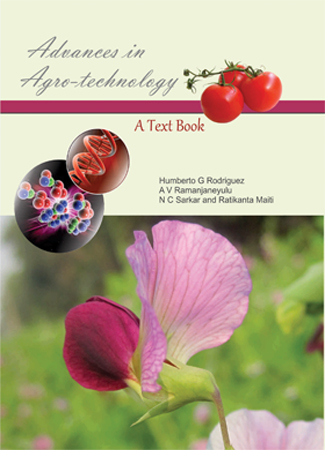
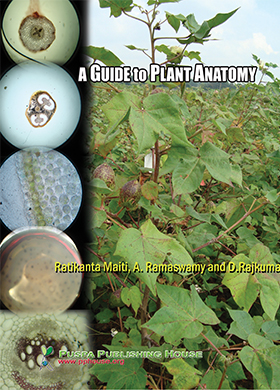
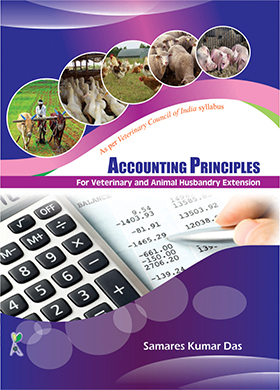
.jpg)
.jpg)


